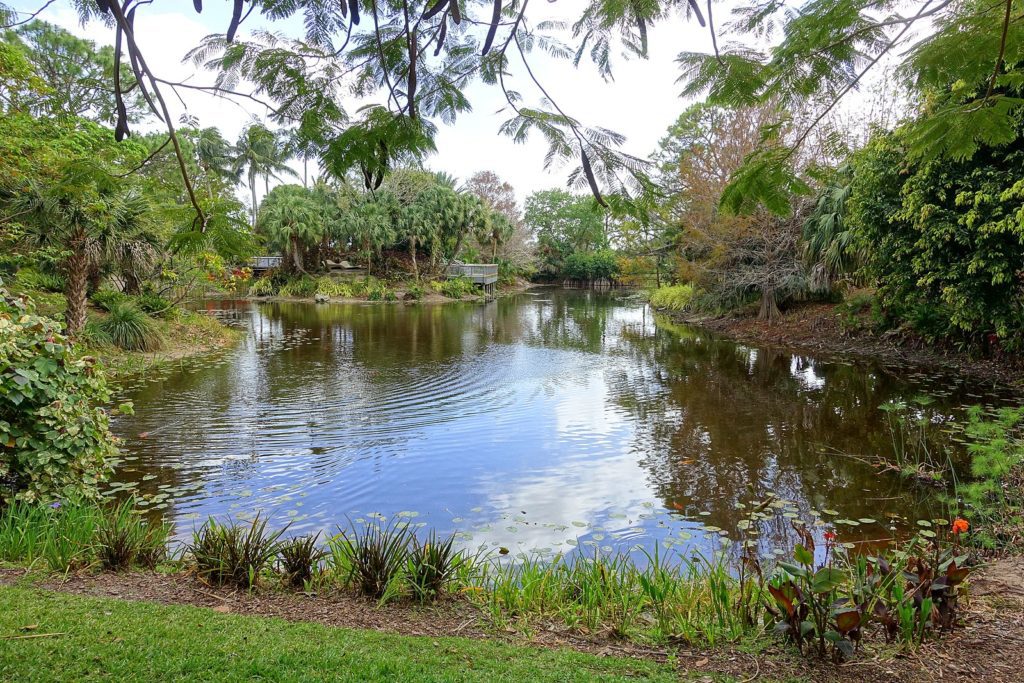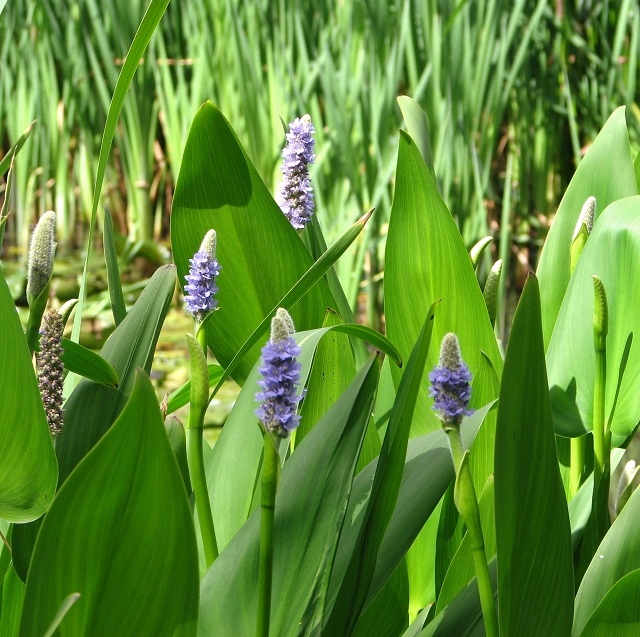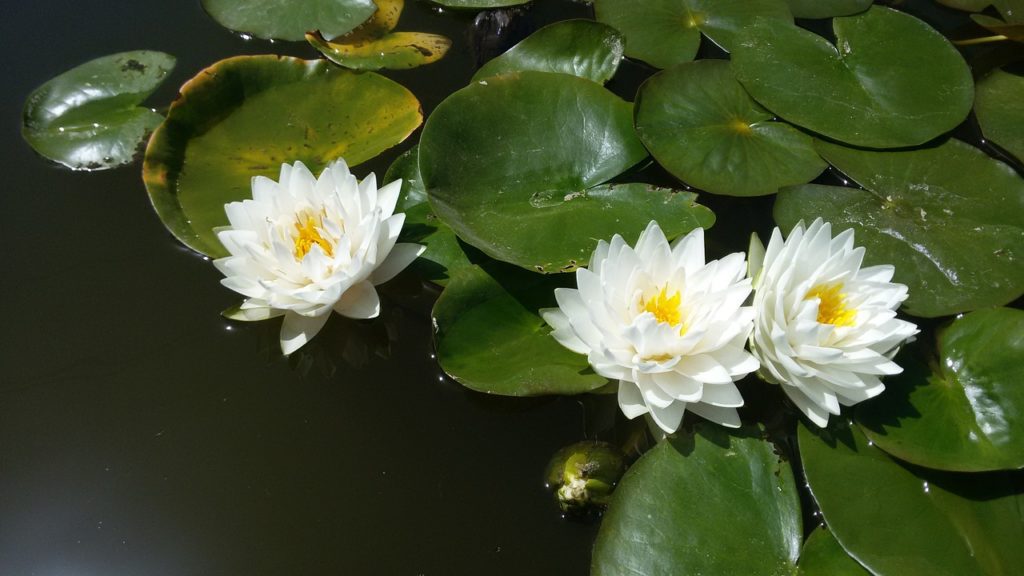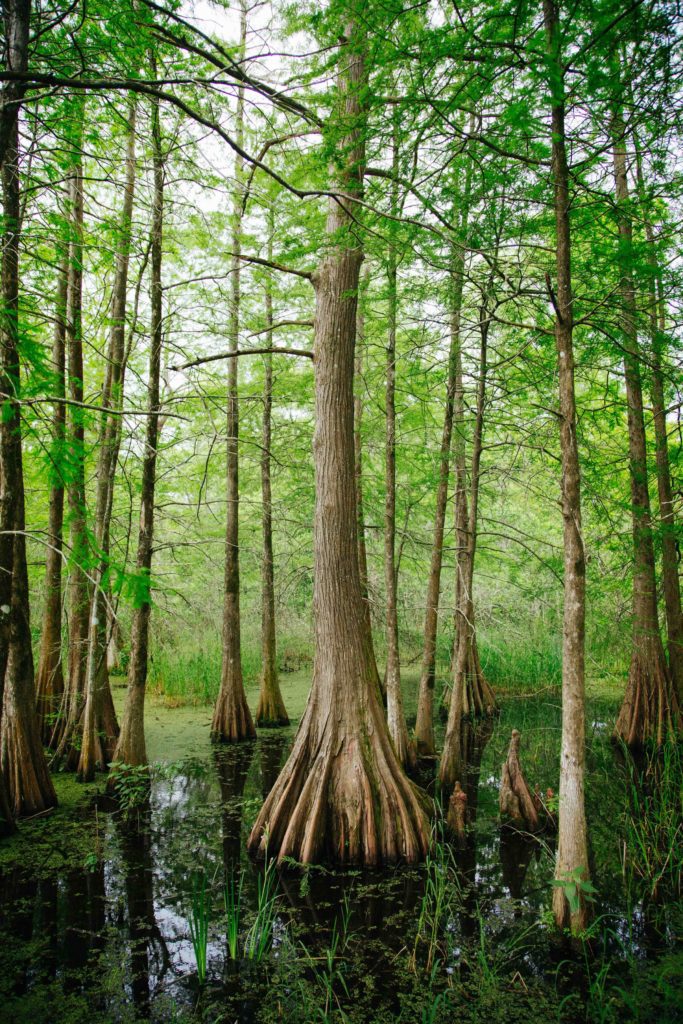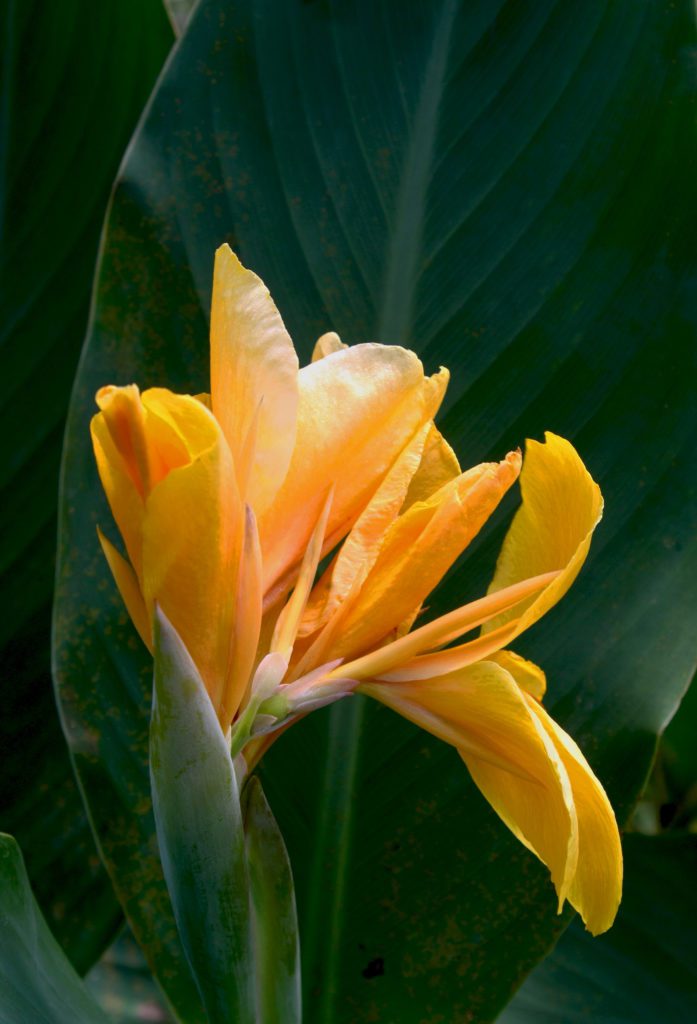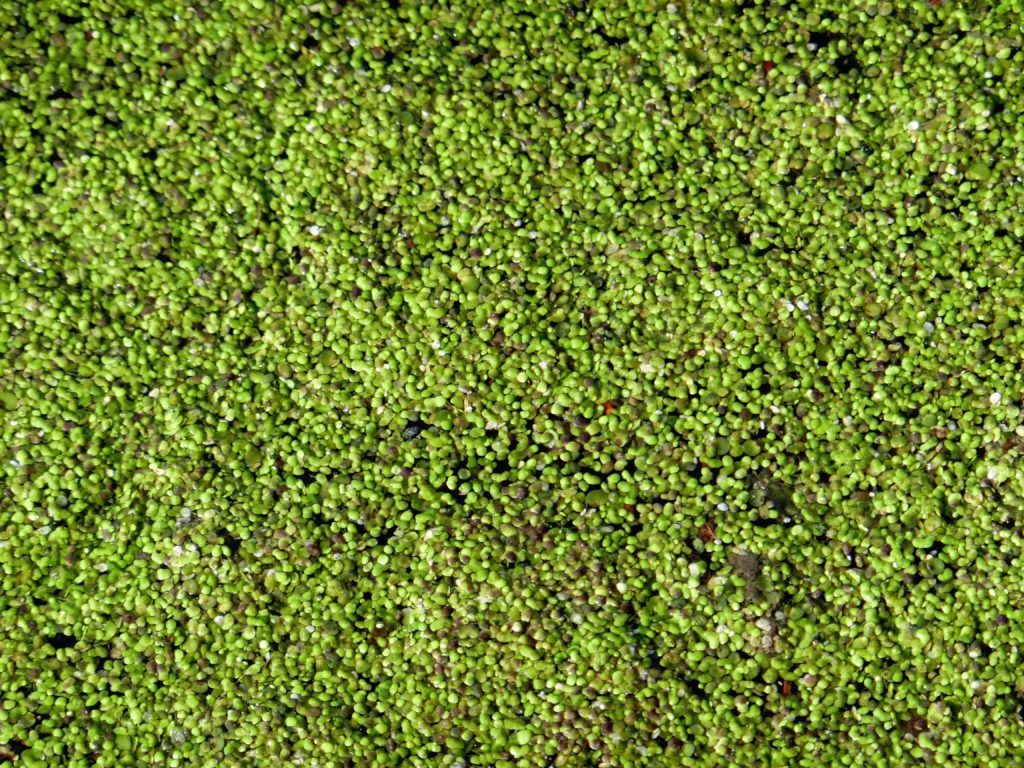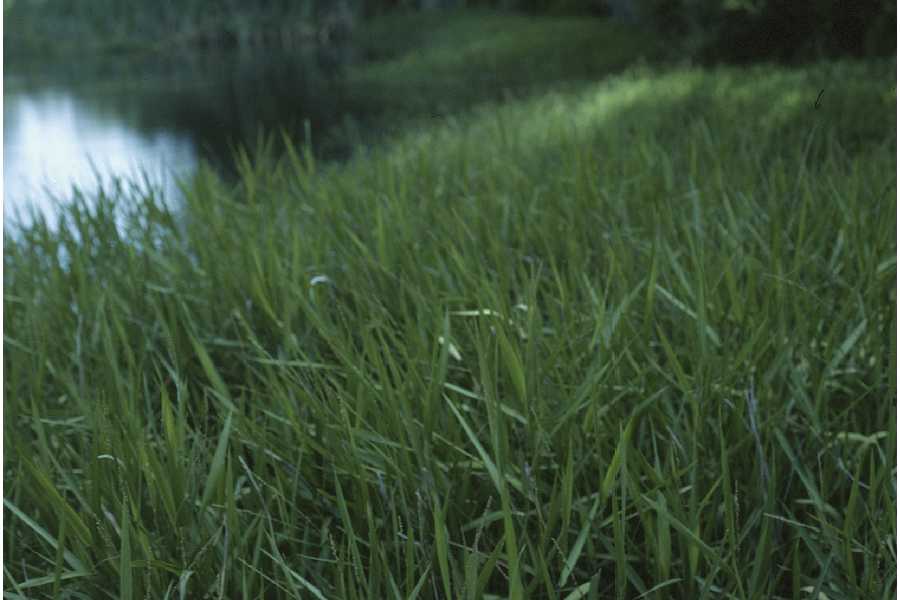Toxic Algae in Your Florida Pond: How to Stop It
Toxic algae in your Florida pond. Cypress trees, canna lilies, duckweed, eelgrass, and algae. Turtles lounging on the shore, and a white heron keeps watch. Sounds pristine and perhaps a somewhat rare scene in HOA communities, and business areas, right? Ponds covered with algae and random masses of duckweed tend to be the norm. But Sean Patton, the owner of Stocking Savvy, the environmental consulting firm restoring habitats found in backyards, communities, and businesses, wants people to know that the former image can easily be a commonplace scene. He joined IDEAS For Us to discuss how and why to create an aquatic habitat without large masses of algae.
What is algae?
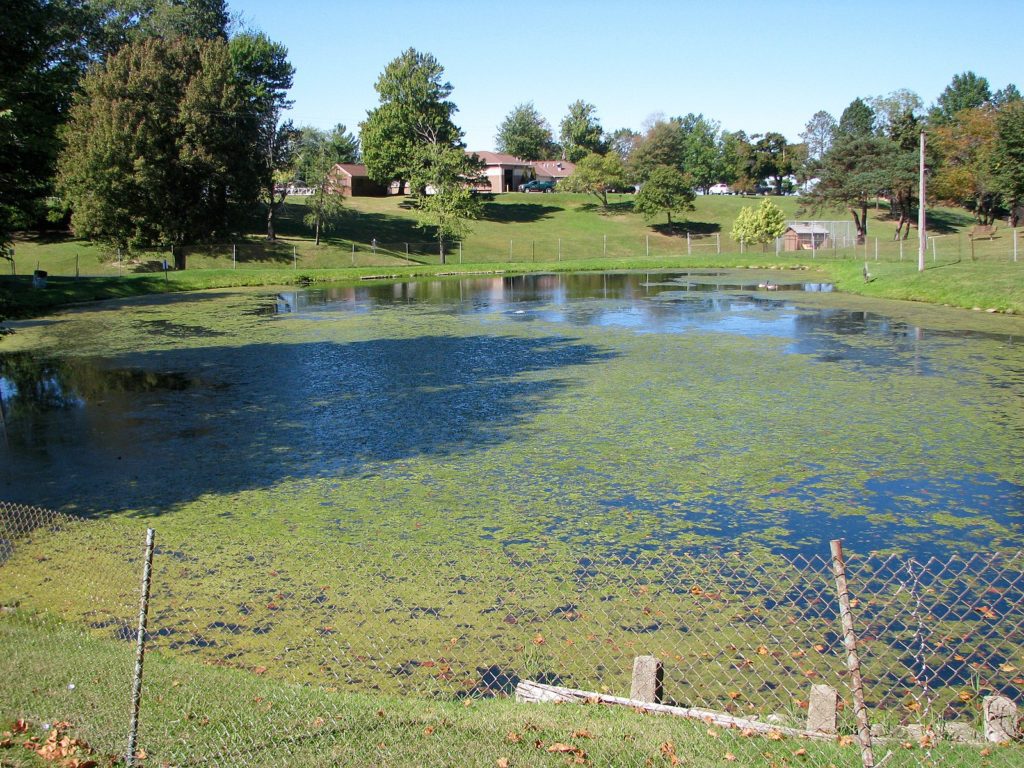
According to the National Oceanic and Atmospheric Administration (NOAA (1)), it is “simple photosynthetic organisms that live in the sea and freshwater.” You know it when you see it: the small, usually (but not always) green circular looking pants that seem to float atop water. If you’ve taken a walk outside in Florida, you have almost certainly seen algae. Algae naturally occurs and is not inherently bad. Many organisms depend on algae, and almost all algae is not harmful.
However, if there is an excess of nutrients, usually created by fertilizer runoff, algae can cause a pond or lake to essentially become a dead zone. Fertilizer contains a plethora of nutrients to trigger growth, including nitrogen, phosphorus, and potassium. In lakes or ponds, a high level of these nutrients can cause masses of algae to block the sun for other aquatic plants, or through the process of eutrophication. Eutrophication occurs when an abundance of plant growth is triggered by excessive nutrients in the water, all of which will eventually die and decompose, releasing a high amount of carbon dioxide and depleting oxygen levels within the water.
While most algae are overall harmless, there are some algae that are toxic. Most famously known is red tide algae or harmful algal bloom. Occurring in regions throughout the world, Florida sees one nearly every year at the Gulf of Mexico. According to NOAA, the bloom causes the water to turn red, and produces toxic severe respiratory issues in people, and can kill fish, manatees, and dolphins (1).
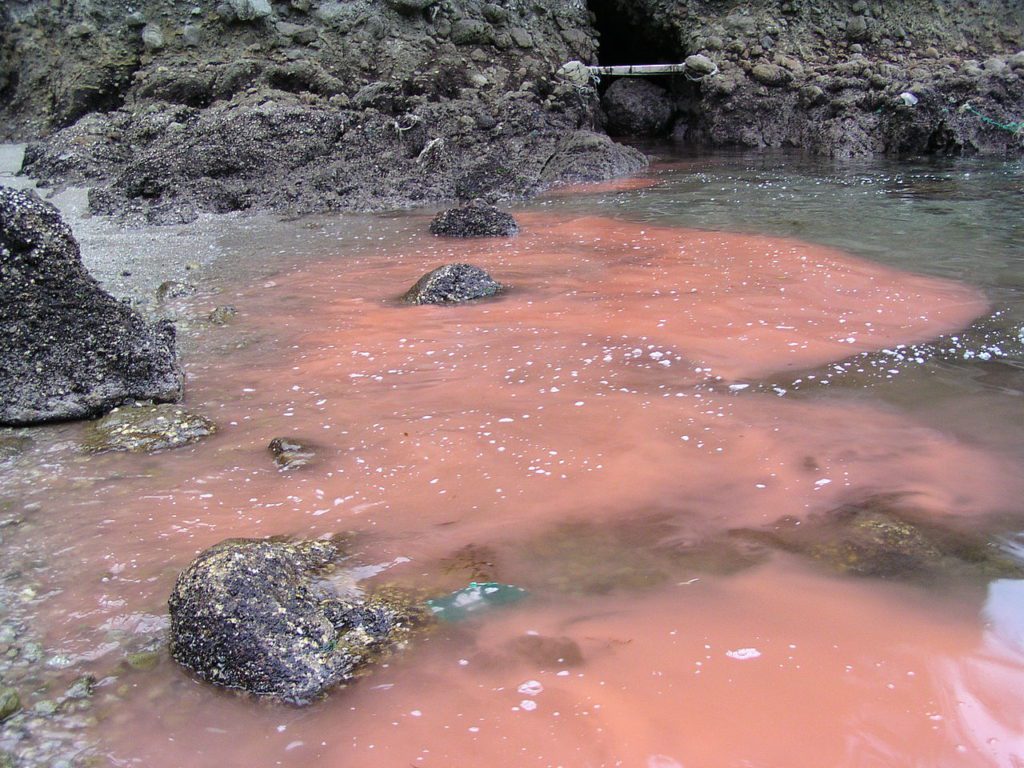
While red tide is a special case, as it has not been determined if nutrient pollution is linked to red tide, other harmful algae blooms are started with nutrient input, and they can contribute to red tide. Habitat restoration is one of the best ways to fight red tide, as it reduces that nutrient pollution and creates an ecosystem for algae eating organisms. The city of Sarasota saw a dip in tourism during the particularly bad 2016-2017 red tides, showing that algae blooms are not only dangerous for public health and ecological health but damaging to the economy too.
There is another common toxic algal bloom common in Florida, called blue-green algae or cyanobacteria. They can produce many types of toxins, smell like something rotting, and can cause illness in humans and animals. The Florida Fish and Wildlife Conservation Commission says “Recreational exposure by direct contact with cyanobacteria bloom from activities…have been reported to cause hay fever-like symptoms (itchy eyes, sore throat, congestion) and dermal reactions (skin rashes, blistering) at high concentrations. Ingesting contaminated water can cause gastrointestinal distress (diarrhea, abdominal pains, nausea, vomiting) … Livestock and domestic animals can be poisoned by drinking contaminated water, and fish and bird deaths have been reported in Florida water bodies with persistent cyanobacteria blooms.”(2)
Why does this matter?
Retention ponds have become a dominant feature of Florida, and can easily be hotspots for algae growth. That is where Sean Patton steps in, consulting and restoring retention ponds and water ecosystems. He advocates for the use of native plants and native animals to create both beautiful and healthy ecosystems, while keeping algae in check.
He especially cautions against turfgrass, as mowing affects aquatic ecosystems. This isn’t because mowing itself is bad, as native plants will grow back. However, when you have a lawn of turf grass like St. Augustine grass or other invasive grasses, leading all the way up to a pond or lake, that is when erosion can really set in. A lot of these grasses require a high amount of fertilizer in order to grow green and full, as desired. Nutrient pollution is one of the biggest pollutants Florida is facing.
How to stop toxic algal blooms? Plant native plants along the shore.
Grasses aren’t good at holding soil at the shoreline or acting as effective filtration systems. When it rains, fertilizer, gas residue from mowing, dust, and other debris all flow over the grass and empty straight into the pond. That is why it is important to have native vegetation. The vegetation on lawns and along the shoreline will filter the stormwater and take up the excessive nutrients, helping to maintain a healthier aquatic ecosystem.
Even if those who are designing retention ponds or are landscapers in residential or business areas, Patton says many of them simply put plants in the water and think that should be it. Instead, Patton shares that a nice, smooth gradual slope into the pond creates less erosion.
Thousands of dollars of property are lost with land literally eroding away into the pond. But it isn’t just a nice slope that reduces erosion. Patton shares that a thickly planted shoreline prevents erosion, creates shade, and increases property value while creating habitat for birds, fish, turtles, and other wildlife. Trees, especially larger, older trees, hold onto soil with their roots, as do larger plants. If you want to still see the water of the pond, simply plant shorter native plants between the trees.
Patton discusses that even when there are one or two other plant species present in a pond, it is usually not enough to create a thriving ecosystem. When commonly seen eelgrass and duckweed are present in a pond with large masses of algae, Patton says this is a symptom of either too many nutrients or not enough herbivores. Algae will always grow in a pond but with too much plant growth comes an overabundance of algae. When beneficial plants decay, that oftentimes turns into algae or washes out to the downstream watersheds.
What to Plant:
-

Pickerel weed (Pontederia cordata) photo by: Copyright Evelyn Simak -

Water Lily (Nymphaea aquatica) via https://pixabay.com/photos/water-lily-aquatic-plants-ponds-1232038/ -

Pond Cypress (Taxodium ascendens) Photo by Kyle Glenn on Unsplash -

Canna lily (Canna flaccida) AntanO -

Giant Duckweed (Spirodela polyrhiza) duckweed-water-lens-aquatic-plant-377535.jpg (4608×3456) -

Maidencane (Panicum hemitomon) Robert H. Mohlenbrock USDA-NRCS PLANTS Database / USDA NRCS.
Stocking Your Waterbody with Savvy
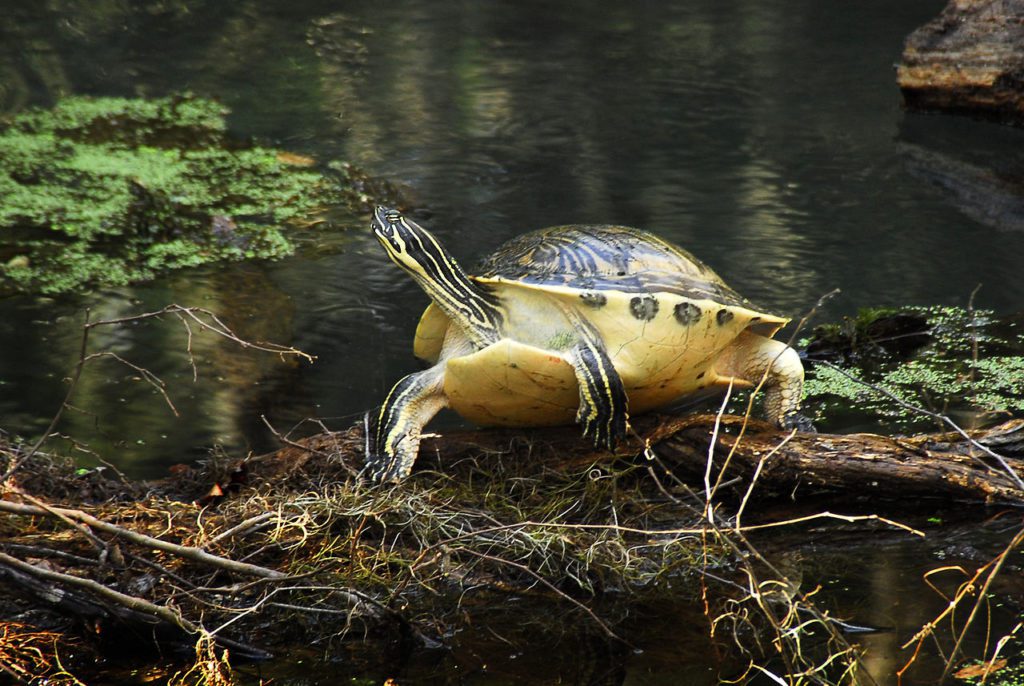
If you have a diverse amount of species, they will control one another. One good way to reduce the number of plants and algae that Stocking Savvy does, is to stock the pond with native turtles, snails, and fish. Turtles are one of the largest freshwater herbivores, and 90% of the Florida Cooter Turtle’s diet is algae. One Florida Cooter can eat up to a pound of algae in a single day. Mussels, shads, and micro feeders also help keep things under control.
Patton says if there is a newly developed area with a freshly made retention pond, or for a restoration project, it is good to stock in stages. Start with first stocking native plants and microbes, then small native fish, and sometimes large fish. If you don’t want to fish, or have too many predators, skip the large fish. Turtles are important, but the more herbivores in a pond, the less vegetation. Consult your local environmental consultant to stock your pond with a professional. You can consult Sean with Stocking Savvy if you have any questions as well.
Animals need hideaways, an ecosystem, not just turf grass. To build a sustainable ecosystem, native plants are always the best choice as they have evolved to grow in these locations, and the wildlife has evolved alongside. According to Patton, retention ponds in Florida are so often built by simply digging a hole, installing a source for water to come in, filling it with water, and leaving it at that. Most of Florida only requires one single organism for the pond to be stocked with – the Mosquitofish.
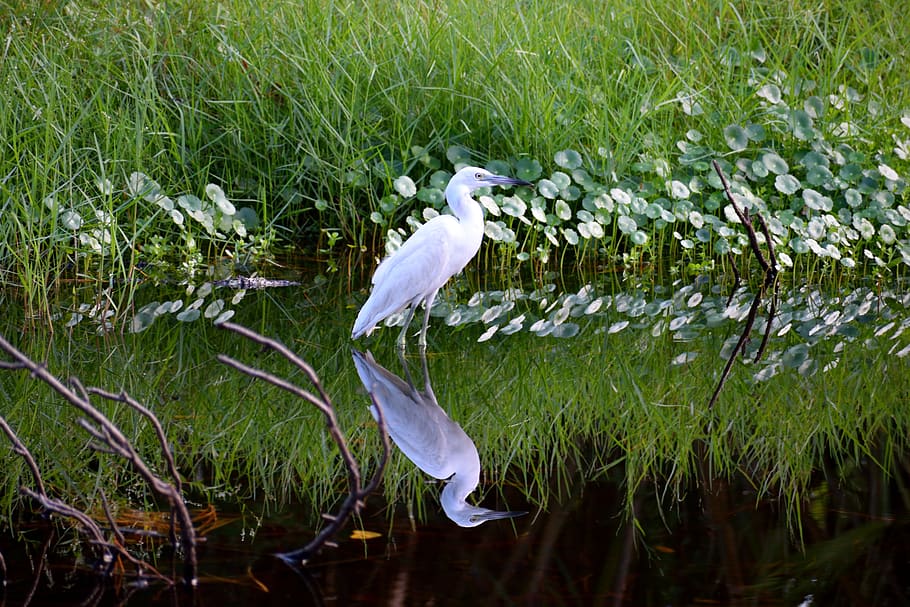
The Mosquitofish is wonderful for eating mosquitoes but that is about it. Because native vegetation is not planted, and no other fish or invertebrates or herbivores are brought in, retention ponds often become perfect breeding grounds for algae. Algae grows in environments with consistently high heat and with large amounts of nutrients. In Florida, heat is always present and a high level of nutrients is common in water bodies due to the use of fertilizers on grass that washes into the water. The Mosquitofish don’t eat the algae, and there are no other plants to compete with it. This allows the algae to be left unchecked and rapidly grow.
Avoid Non-Native Plants By Planting With Florida Native Plants
Patton urges to refrain from planting any non-native plant species. If they aren’t native, either they won’t actually grow or work as promised, or they will work so well that they become invasive. In fact, two out of three invasive plant species were first originally introduced by (hopefully naive) homeowners. Instead of risking it, simply go with native plants. If you do, you will likely be lucky enough to attract at least one of the 400 Florida native butterfly species. When you plant with native plants (native to whatever area or part of the world you are in), pollinators will flock to them. This is not only enjoyable and good for the ecosystem, but it helps neighboring farms and growing communities.
Even if planting natives and restoring habitats doesn’t help stop algae growth, planting native plants will reduce nutrient pollution, creating clearer water. Beyond looking aesthetically pleasing, clear water increases property value. Wildlife and birds are also attracted to this healthier ecosystem, and as the birding and fishing industries play parts within Florida’s tourism industry, it is economically sound to plant native.
To create a native aquatic landscape, check out Stocking Savvy and learn how you can fight back algae and bring in wildlife.
Sources:

